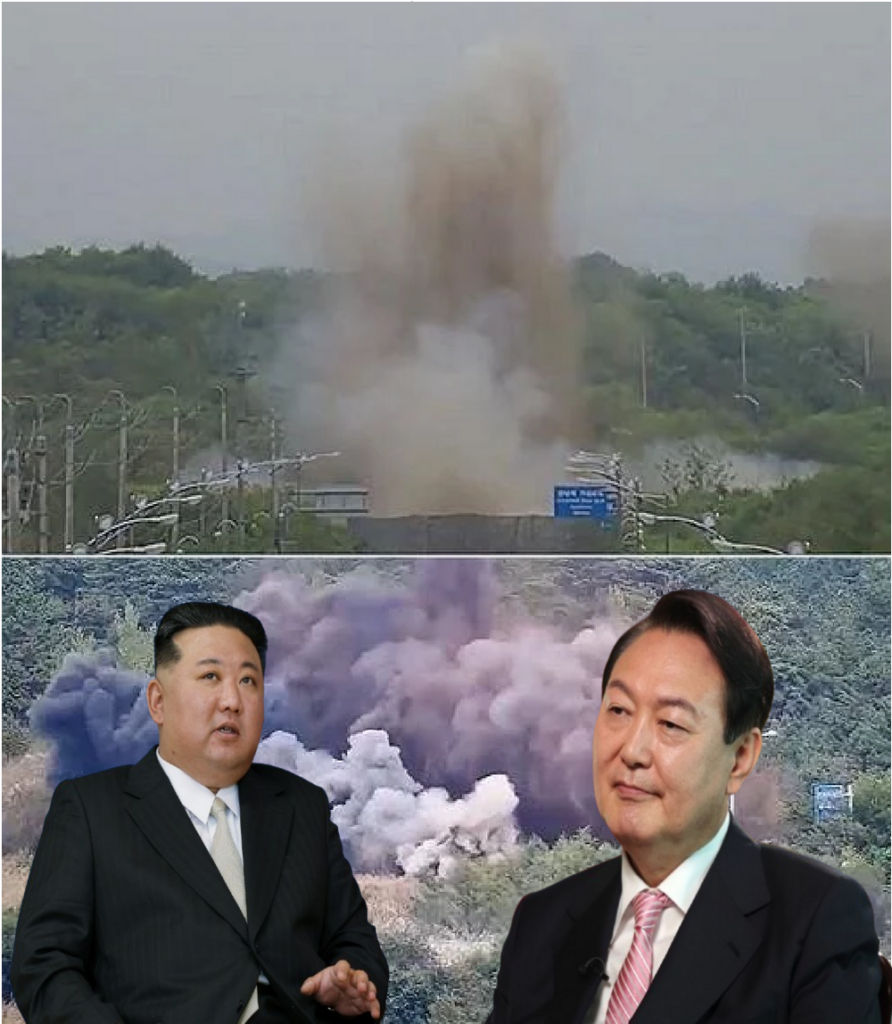
- North Korea has recently targeted a key road linking the North and South, inflicting damage despite the route being unused for some time.
- South Korea responded strongly, warning that any attack would lead to a “regime change” in Pyongyang.
- In response, North Korea has deepened its ties with Russia, with both countries sharing a common adversary in the U.S.
The Korean Peninsula has long been a focal point of geopolitical tensions, particularly in the Asia-Pacific region, dating back to the Korean War. While hostilities between North Korea (DPRK) and South Korea (ROK) have persisted for decades, recent developments have pushed tensions to new heights.
North Korea has recently targeted a key road linking the North and South, inflicting damage despite the route being unused for some time. This act coincides with reports that the North has placed its artillery units and forces near the South Korean border on high alert, preparing for “war mode.” These moves have further escalated tensions between the two Koreas. South Korea responded strongly, warning that any attack would lead to a “regime change” in Pyongyang. Meanwhile, reports of South Korean airspace violations over the North have complicated matters.
Both countries are exchanging severe threats, with North Korea stating it would not hesitate to use nuclear weapons if its security is threatened. The situation is growing more dangerous, as this marks a continuation of heightened tensions seen over the past two years. In 2022, North Korea launched missile tests that landed in South Korean and Japanese waters, escalating tensions not only with its neighbours but also with the U.S.
Between 2022 and late 2023, North Korea fired several intercontinental ballistic missiles (ICBMs) in a show of military strength. By late 2023, North Korea took a new, unusual approach, sending “trash balloons” filled with electronic waste into South Korea, sparking further conflict. South Korea retaliated with its trash balloons, further destabilizing the region.
To understand these provocations, it’s crucial to look at North Korea’s concerns, primarily the increasing U.S. military presence and its strengthened alliance with South Korea and Japan. Historically, relations between Japan and South Korea have been tense, particularly over Japan’s wartime history. However, in March 2023, South Korean President Yoon Suk Yeol and then-Japanese Prime Minister Fumio Kishida made efforts to improve relations, recognizing shared security threats, especially from North Korea.
This cooperation between Japan, South Korea, and the U.S. is significant, as it presents a unified front against North Korea, adding to the DPRK’s anxieties. Joint military exercises between the three countries signal a coordinated defence strategy, further isolating North Korea.
In response, North Korea has deepened its ties with Russia, with both countries sharing a common adversary in the U.S. The strategic partnership between Pyongyang and Moscow has grown stronger, notably after North Korean leader Kim Jong-un visited Russia, which resulted in defence agreements. Russian President Vladimir Putin’s visit to North Korea in June 2024 solidified this alliance. Both nations have agreed to support each other militarily if conflict arises, providing North Korea with a crucial deterrent against U.S. forces and their allies.
This partnership is valuable for Russia, especially as it continues its conflict in Ukraine. Reports suggest North Korea has supplied Russia with missiles and artillery for its war effort, and there are indications that North Korean soldiers may eventually be deployed to support Russia. For North Korea, aiding Russia serves dual purposes: it strengthens its alliance with a key partner. It offers an opportunity to test its military capabilities against Western weapons used in Ukraine.
For Russia, closer ties with North Korea offer strategic advantages in the Asia-Pacific, allowing it to expand its influence in the region. This mutually beneficial alliance supports both nations’ regional and global ambitions.
Given the current situation on the Korean Peninsula, North and South Korea need to seek diplomatic solutions. Both countries must be cautious of external influences that could exacerbate the problem. While they rely on allies like the U.S., these external actors often have their strategic interests, which may not align with regional peace. A peaceful resolution can only be achieved through direct dialogue between North and South Korea, free from excessive external interference.
Aayush Pal is a freelance writer on contemporary geopolitical developments. The views expressed in his work are entirely his own.
